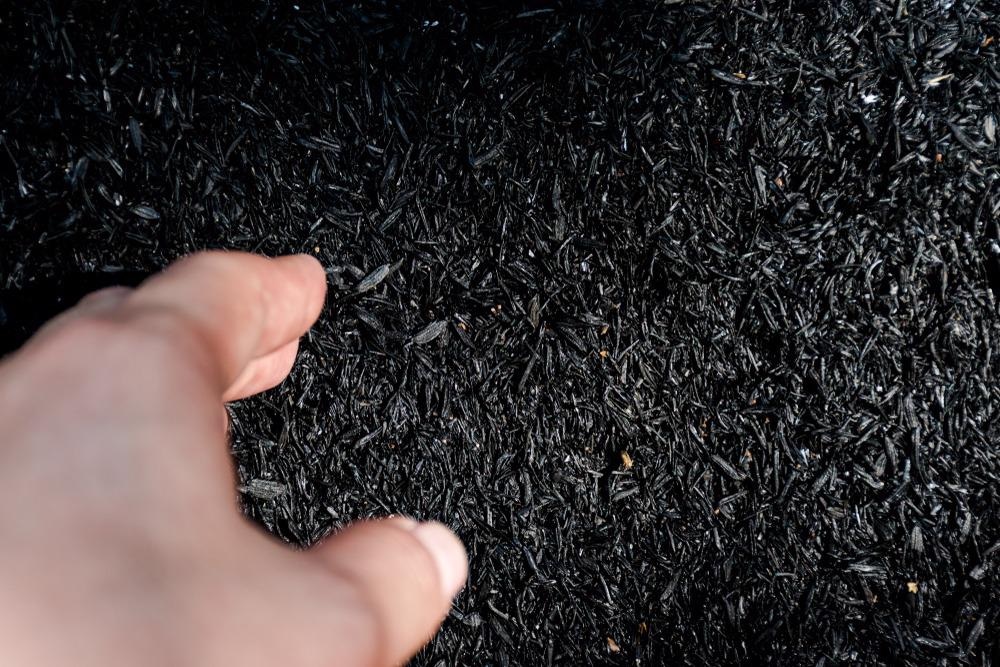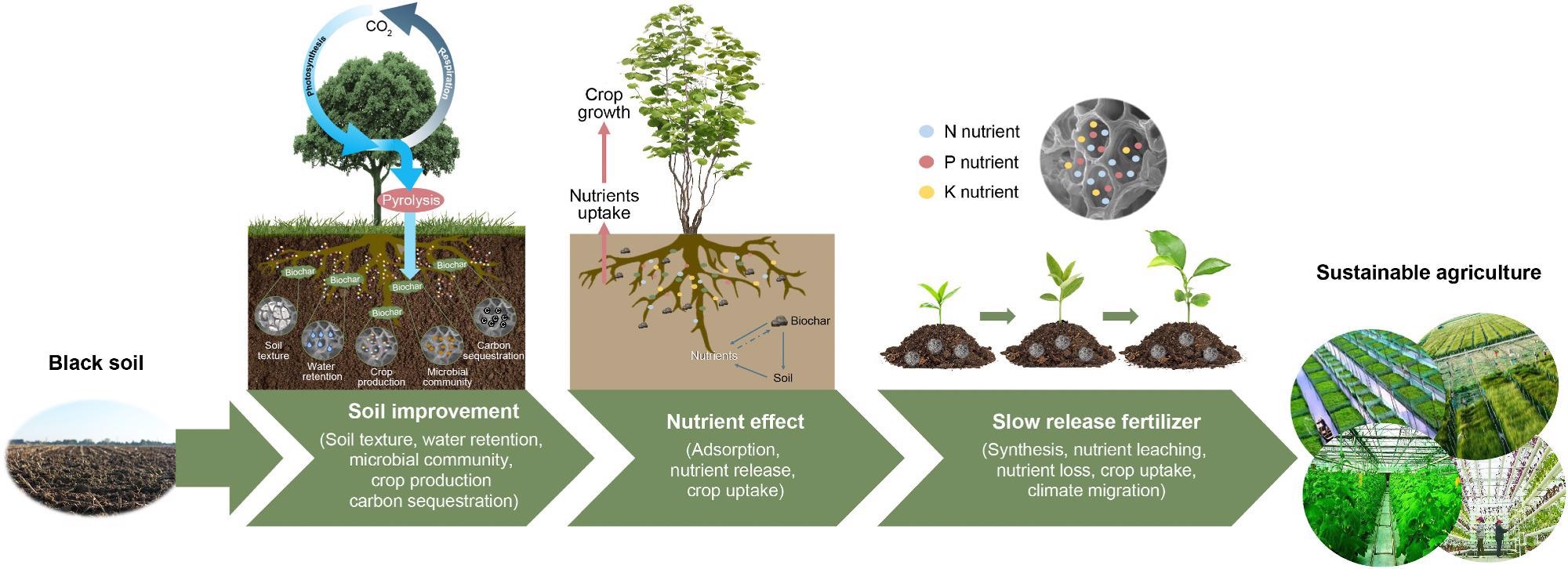A review paper, currently in the pre-proof stage, has been published online investigating the recent advances in research into biochar-based slow-release fertilizers. The findings of the research will be published in the journal Environmental Science and Ecotechnology.

Study: Biochar-based slow-release of fertilizers for sustainable agriculture: A mini review. Image Credit: StorKiss/Shutterstock.com
Current Challenges in the Agricultural Sector
The world population has grown at an unprecedented rate over the last century due to advances in the quality of life. Whilst predicting population growth is a complex undertaking, the United Nations Food and Agriculture Organization predicts that by 2050, there will be 9.7 billion people living on Earth.
With population growth comes a key challenge: how will future producers keep up with the demand for food and how can governments ensure continued food security? Many technologies have been developed to improve crop yields and food quality, and the use of chemical fertilizer is a widespread solution for achieving this.
Indeed, in 2019 the Food and Agriculture Organization predicted that by 2022, the global demand for fertilizer will reach 49.10 million tons. Dwindling natural resources mean that, for example, high-quality phosphorous will become depleted within 50-400 years, according to various predictions.
Chemical fertilizer use can be problematic due to runoff of environmentally damaging chemicals and challenges caused by inefficient nutrient uptake by crops. Moreover, decreasing arable land space and associated activities such as deforestation contributes to a growing environmental, economic, and social emergency.
Biochar
Biochar is derived from organic feedstocks. A carbon-rich solid material, biochar is sustainable and is commonly derived from sources such as pellets, wood chips, tree cuttings, rice husks, crop residues, bones, and other by-products of the food processing industry. It is typically produced by the thermochemical transformation of feedstocks. Commonly used processes include pyrolysis, hydrothermal carbonization, and gasification.

Schematic of the research evolution of biochar-based SRFs. Image Credit: Wang, C et al., Environmental Science and Ecotechnology
Biochar possesses several properties that make it attractive as a resource material for several applications such as soil amendments, waste management, carbon sequestration, and energy storage. Advantageous features include large surface area, graphitic structures, abundant surface groups, and porous micro-morphologies. However, research into the application of biochar for some agriculturally advantageous technologies remains in its infancy.
Biochar for Use in Slow-Release Fertilizers
Recently, biochar has emerged as an attractive candidate for use as a slow-release fertilizer. Slow-release fertilizers have been widely proposed in recent years to overcome the challenges faced by conventional chemical fertilizer over-use. These fertilizers delay the availability of their nutrients for uptake by plants post-application. This prolongs nutrient availability, making them more efficient fertilizers, and avoiding nutrient loss and leaching into the environment.
Whilst biochar is carbon-rich and research has indicated that using the material as a soil amendment can improve the supply of nutrients and enhance crop yields, reduce nutrient leaching, immobilize heavy metals and other contaminants, and reduce greenhouse gas emissions, biochar possesses limited nutrients which are necessary for fertilizers. Therefore, loading nutrients into biochar has been a recent research focus in the field of agricultural fertilizer research. The number of published papers and citations has grown over the past few years.
The Review
The focus of the mini-review currently in the pre-proof stage in Environmental Science and Ecotechnology is the recent advances in research into biochar-based slow-release fertilizers. To the authors’ knowledge, there is a lack of a systematic review on the subject. The authors have reviewed several studies in the current literature.
The paper includes a section on the evolution of research into biochar-based slow-release fertilizers. The authors have noted that it is known that ancient Amerindian populations used biochar as a soil amendment by applying dark earth formed by slash-and-char practices. They have highlighted the properties of biochar, including improving the chemical and physical properties of soil and fertilizer and the control of plant diseases and microorganisms. They have noted that biochar has gained significant attention as a sustainable alternative to chemical fertilizers.
Synthesis strategies for biochar-based fertilizers have been explored in depth. These include impregnation, co-pyrolysis, encapsulation, and in-situ pyrolysis. Several synthesis methods have been used to manufacture fertilizers such as phosphorous-enriched biochar fertilizers, biochar-based controlled release fertilizers, magnesium-enriched biochar fertilizers, biochar-based nitrogen slow-release fertilizers, biochar pellets embedded with fertilizers, and biochar-based N/P fertilizers.
The advantages and drawbacks of each synthesis process have been explored in the review paper, along with strategies to improve the efficiency of biochar-based fertilizer synthesis and its properties. The authors have also investigated integrated methods in-depth. These methods include microwave-assisted co-polymerization and integrated co-pyrolysis and encapsulation.
The paper has also evaluated potential agricultural applications, noting that plant growth experiments are imperative for evaluating the efficiency of biochar-based slow-release fertilizers. Several pot and field studies have been performed over the years, as noted by the authors. They have demonstrated the advantageous properties of biochar-based fertilizers.
However, the authors have noted that several challenges exist with realizing the widespread use of biochar as a material for use in slow-release fertilizers. Challenges exist from the perspective of synthesis methods, evaluation of efficiency and bioavailability, and long-term assessments of real-world applications.
Moreover, environmental conditions can cause loss of biochar, and the storage and transport of the material can be challenging. However, biochar remains an attractive material for producing more sustainable, efficient, and environmentally friendly fertilizers.
Further Reading
Wang, C et al. (2022) Biochar-based slow-release of fertilizers for sustainable agriculture: A mini review [online, pre-proof] Environmental Science and Ecotechnology 100167 | sciencedirect.com. Available at: https://www.sciencedirect.com/science/article/pii/S2666498422000230
Disclaimer: The views expressed here are those of the author expressed in their private capacity and do not necessarily represent the views of AZoM.com Limited T/A AZoNetwork the owner and operator of this website. This disclaimer forms part of the Terms and conditions of use of this website.